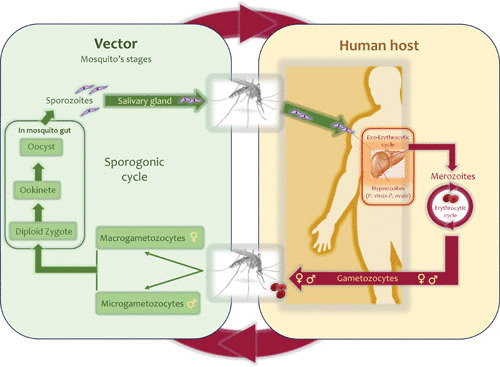FIGURE 2.

Plasmodium life cycle. The Plasmodium haplontic life cycle comprises a vertebrate host and a dipteran vector. In human malarias, an infected female Anopheles mosquito inoculates haploid sporozoites into the host. These sporozoites invade the liver cells and mature into schizonts. The schizonts rupture, releasing merozoites that infect the red blood cells. Some species develop dormant liver stages or hypnozoites that can produce merozoites at a later time (relapse). A fraction of merozoites differentiates into gametocytes (micro- and macrogametocytes). All these stages are haploid. These gametocytes are then taken up by an Anopheles mosquito, in which zygote formation takes place (diploid stage). Due to the nature of the cycle, inbreeding is common. The zygote differentiates into ookinetes and oocysts, the latter with a syncytial cell or sporoblast containing thousands of nuclei in which meiosis takes place, producing haploid sporozoites.
